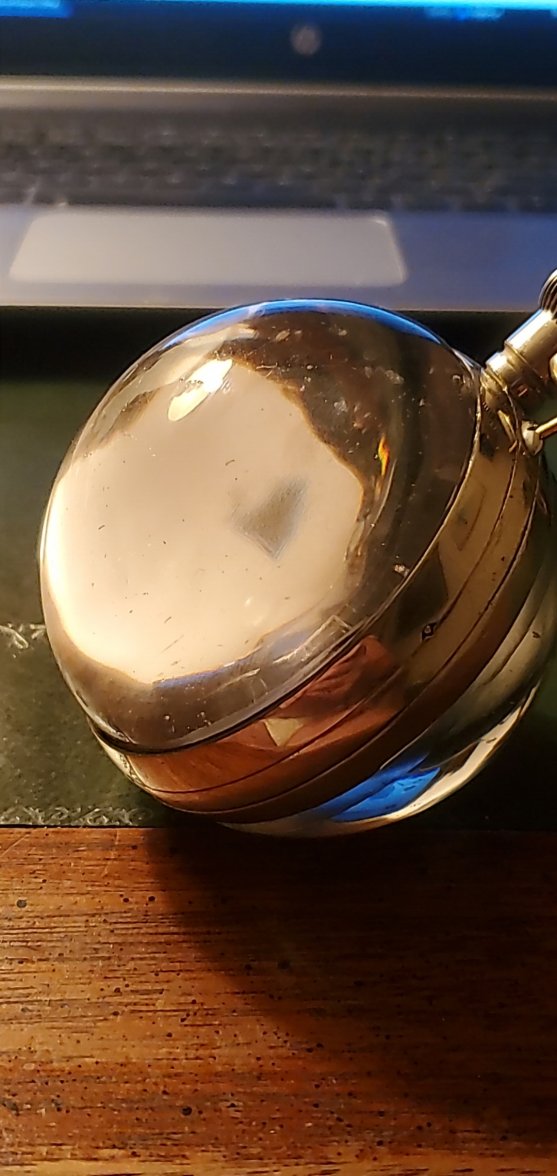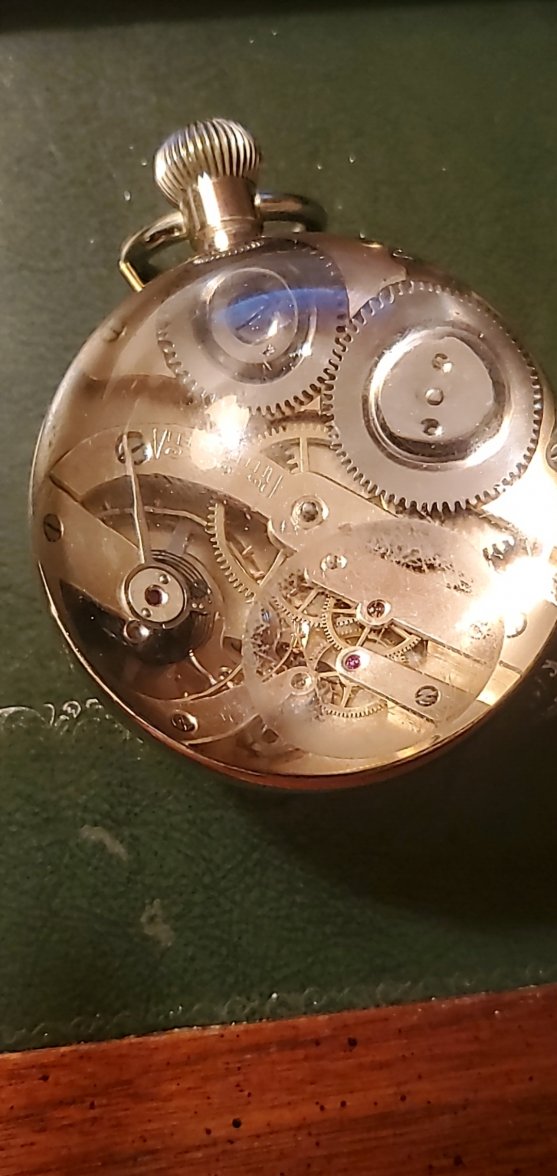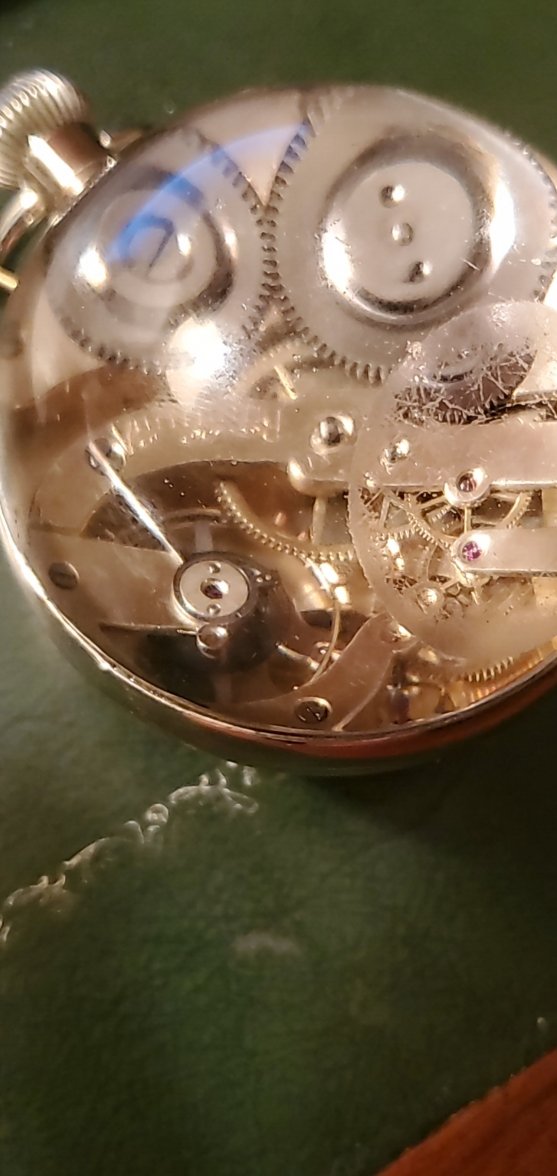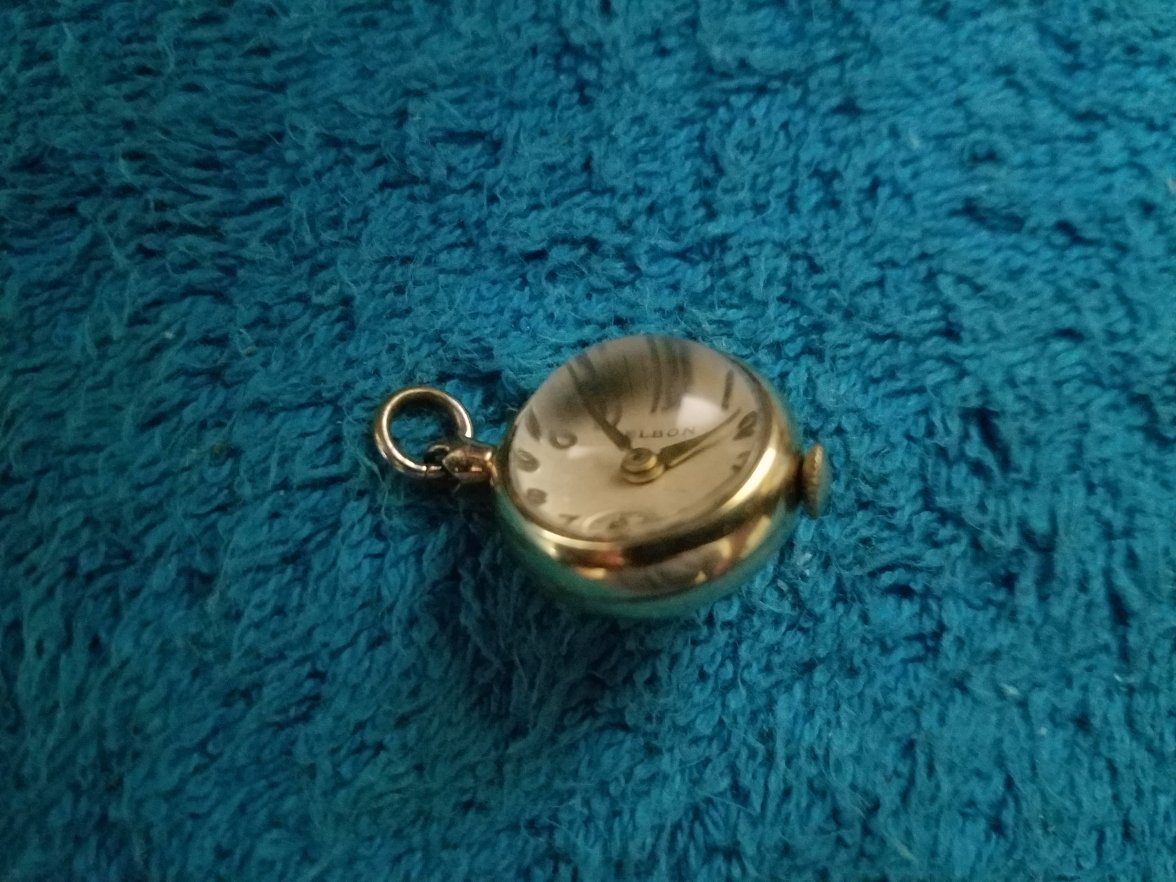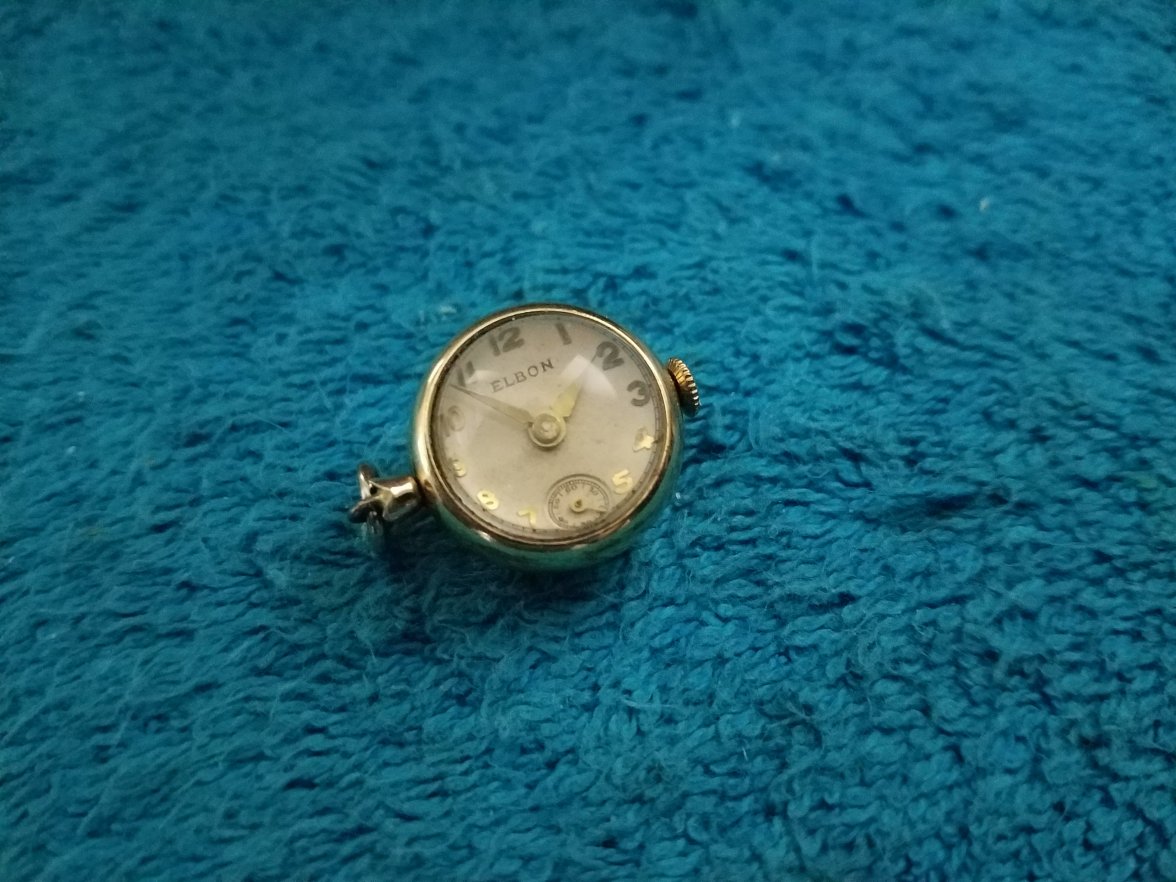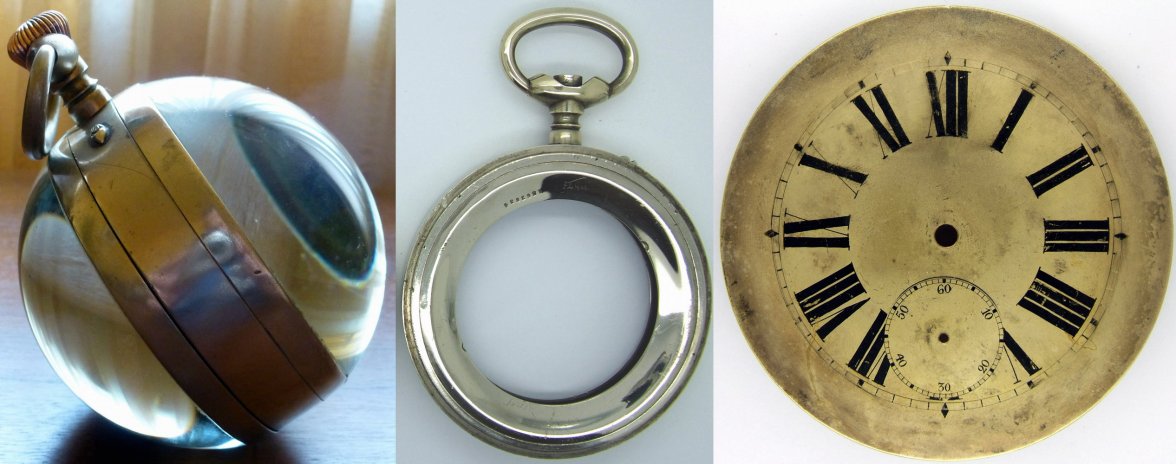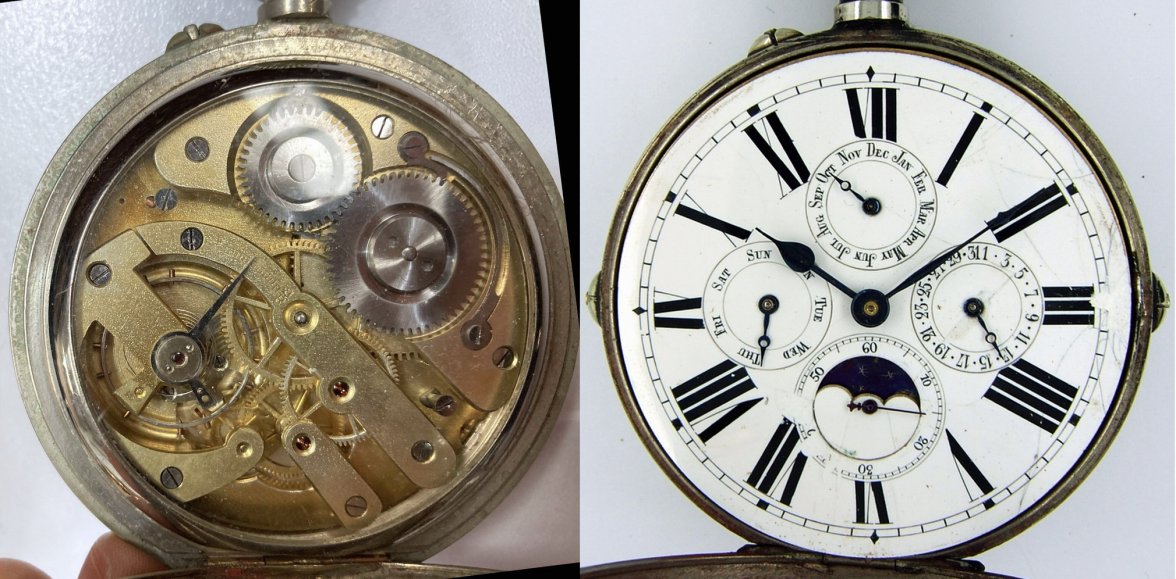I am posting it here to see if anyone can tell us anything about this clock.
I’ll try to give you a bit more insight – and what to look for. I am generally referring here to Omega versions, other makes were presumably similar.
We are talking about ‘Goliath’ watches. The Omega 30’’’ ‘Goliath’ had a movement diameter of about 67 mm (hence 30 ligne). The pocket watch case was therefore about 70 mm. But there were bigger versions which used the same movement in a larger case: the 30/40’’’ has a case diameter of about 103 mm (thus with a large metal surround to the movement). There was a still larger version, a 30/60’’’ (not relevant here).
The Omega crystal ball was referred to as being 30/40’’’: the movement was the same 30’’’ and it had that large metal ‘surround’ that filled it out to a diameter of about 98 mm. But because of the magnification caused by the crystal, the movement appears to fill the case (an illusion).
Similarly, the markings on the dial left a large margin (see my image) – but because of the magnification of the crystal, the dial appears to fill it (again an illusion).
As in a pocket (and other) watch, the movement and dial are mounted in a case – with a crystal (glass) on the front and a caseback to cover the movement. With the crystal ball, each crystal hemisphere is mounted in a metal rim which in turn is pressed onto the case.
If you look at the side view of a ball that I show, your watchmaker will ease off both crystal hemispheres – to leave the case which holds the movement and dial (the metal rims that hold the hemispheres onto the case get worn and then the crystals become insecure – bad news!). It would be good if you could get images of each side of the case (showing the movement and dial), thus with the crystal hemispheres removed. You should see a dial with a big margin (as illustrated here) and a movement with a big metal surround.
Now we move onto your particular watch. I show a movement from a Goliath watch which seems very similar to yours. I don’t know the make. It will probably have a diameter of about 65 mm.
I also show a ‘lunar’ dial from a different Goliath, diameter also about 70 mm. But this dial will fill the case on a typical pocket watch: the dial on your watch would need to have the big margin around it (as in my image).
As
@watchyouwant mentions, each of the sub-dials should have an ‘adjustment corrector’, to be able to set the day/date/month etc. It would seem that there are pins in the side of your case (but each sub-dial should have one): hard to be sure.
As I mentioned before, the ‘lunar’ dials were popular in the period 1890 – 1900 (based on the same movements as ‘ordinary’ dials). The crystal balls were similarly produced at around this time, for Omega a bit later. It’s just possible that you have an original lunar-dialled crystal ball – it would be very unusual.
I hope that helps. Please give us the diameter of your ball. Please also try to get the photos of the case without the crystal hemispheres.
